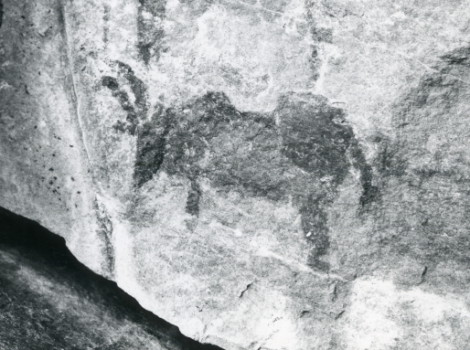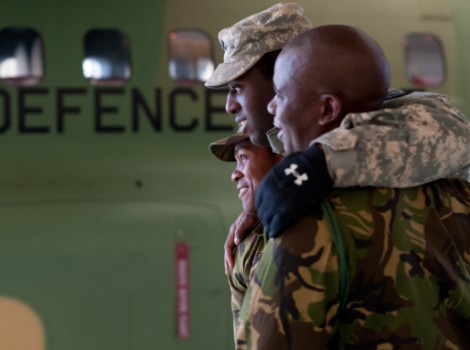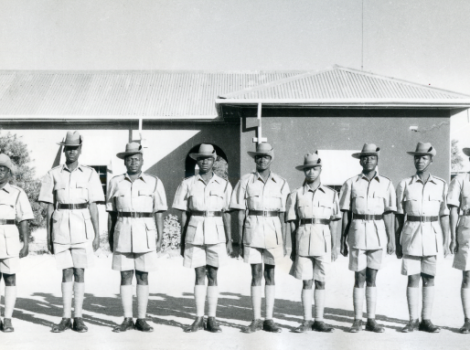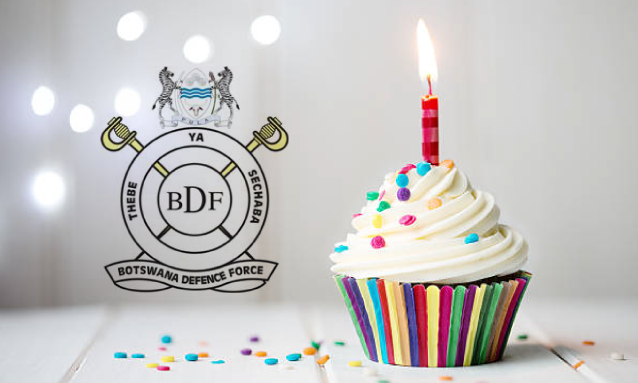
Yesterday Batswana from across the country descended upon the national stadium in Gaborone to celebrate the growth and accomplishment of Botswana’s military; the Botswana Defence Force (BDF), an institution that has come to be regarded as one of Africa’s success stories by international strategic studies scholars. The event marked the celebration of 41 years since the BDF was formed. It also saw the BDF welcome its new Commander-In-Chief, His Excellency President Mokgweetsi Masisi who took his presidential oath on April 1.
Where it all began
The BDF was formed in the 1970s, a turbulent political period in Southern Africa. The indigenous people in neighbouring countries were involved in liberation struggles against their colonisers. At the centre of these countries was Botswana, a landlocked country which had just gained independence from Britain in 1966. At the time, there was relative peace in the country although it did feel the ripples of the liberation struggles.
In South Africa, a bitter struggle against the oppressive apartheid regime was raging, while on the people along the eastern and northern borders Zimbabwe (South Rhodesia) and Zambia (North Rhodesia) were involved in decolonisation struggles of their own. To the west, Namibia under the rule of South Africa’s apartheid regime was also fighting its own liberation struggle.
Given all the upheavals surrounding it, Botswana was faced with a real security threat, as it did not have a military force, relying heavily on a small paramilitary Police Mobile Unit (PMU). Eleven years after Botswana’s independence, the BDF was formed out of the PMU, with the late Lt Gen Mompati Merafhe as its first commander. Former President, Lt Gen Dr Seretse Khama Ian Khama, then a 24-year-old Brigadier, became its deputy commander.
Many regional military forces were founded on existing and well-advanced military structures, while the BDF had to start from scratch. From its humble beginnings, the BDF take prides in having become one of the few military forces in the region that can boast of being a purely home-grown outfit.
One of the key features in the evolution of the BDF is the infamous Lesoma Ambush of 1978 in which 15 Botswana soldiers were ambushed and killed by Rhodesian Forces.
Yet another, the 1985 raid in Gaborone by the South African Defence Force commandos, saw 12 people perish. The two incidents were undoubtedly tragic and a harsh lesson for the young force. To this day, the Lesoma horror incident is still remembered and commemorated as Fallen Heroes Day in Botswana.
The BDF – highlights
The desire to see peace prevail regionally and across Africa has seen the BDF serve in places where they were exposed to life-threatening situations. The BDF has been a regular contributor to the United Nations Peacekeeping Missions. In 1992 and 1993, a BDF contingent participated in ‘Operation Restore Hope’, a United States-led coalition of forces aimed at restoring peace in war-torn Somalia.
From 1993 to 1994, a team BDF agents participated in a UN Peacekeeping Mission in Rwanda as observers. The same year, BDF troops participated in a UN peacekeeping operation in Mozambique. The BDF also participated in Operation BOLESA, a SADC military intervention in Lesotho in 1998. The operation was the first step in a retraining programme for the Lesotho Defence Force members. Since then, the BDF has conducted operational exercises with defence forces of neighbouring countries and other friendly forces. The popular Exercise Thokgamowas one such exercise, conducted in 2005 with SADC member states taking part.
The last decade (2007-2017) has seen BDF establish a Defence Command and Staff College, adopt a Brigade Grouping structure, enrol non-commissioned female officers and introduce the special entrant officer cadet programme.
Celebrating the BDF, our heroes
The annual celebrations commonly known as BDF Day, afford the force and the nation at large the opportunity to reflect on the force’s past operations and future plans. Every year during the last week of April, thousands of Batswana, young and old, descend upon the national stadium to witness the BDF display various activities such as mock battles, dog displays and physically taxing obstacles. It is a very popular event that many Batswana make a full family day of!
Flag bearers, usually positioned at the centre of the guard, carry the National Colour and other flags including a unit flag and formation flag. This is called the Colour party. The Guard of Honour carries out a ceremonial march to honour domestic and foreign dignitaries as a mark of respect. The BDF Band whip the already excited spectators into a frenzy by churning out sweet melodies.
This year’s celebrations marred by tragedy
Tragically, this year’s event took on a sombre mood; marred by tragedy as a BDF officer plummeted to his death when a BDF plane crashed during rehearsals on the eve of the celebrations. Following the accident, the BDF released the statement below.
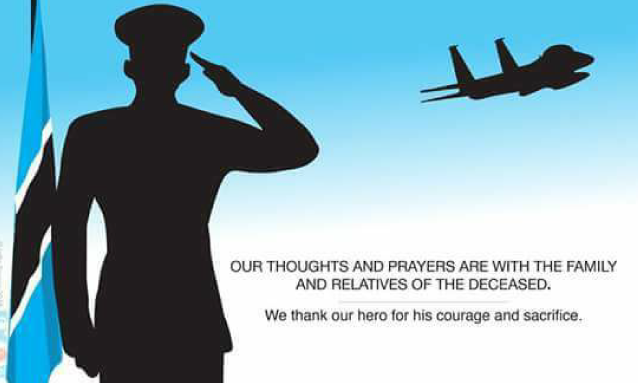
Press release- BDF BF5 fighter aircraft crash
The Botswana Defence Force informs the public of an unfortunate incident in which a pilot lost his life in a BF5 fighter aircraft crash which occurred at Gaborone Golf Course today at around 1145 hrs during the BDF Day celebration rehearsals.
The names of the deceased are still withheld until his next of kin have been informed. The BDF requests the public to accord the family and friends the privacy they deserve to mourn their loved one.
As a matter of urgency, the Commander has directed the appointment of an investigation team to examine the cause of the crash. At this difficult time, our thoughts and prayers are with the family of the deceased.
Truly sad – MHSRIEP.
Source: Botswana Government Facebook page

